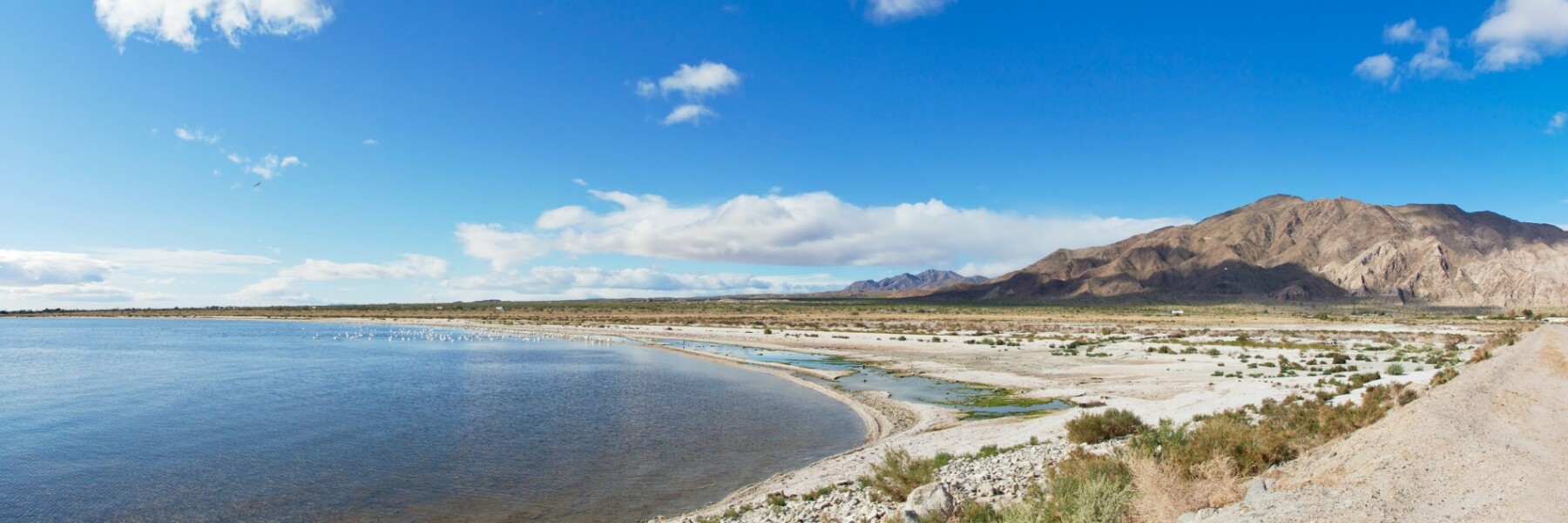California's largest inland lake has rapidly receded, creating public health and environmental emergencies. In recent years, the Salton Sea has been aptly described as a “human health crisis” and an “ecological nightmare.” The desert region around the sea carries one of the highest asthma rates in the country, and its fish and migratory bird populations are crashing. The Salton Sea lakebed could become the largest source of particulate air pollution in North America, threatening the health of hundreds of thousands of people in California and the Mexican state of Baja.
Over the past 15 years, successful water conservation efforts designed to reduce California’s reliance on the Colorado River have included measures to address the impacts at the Salton Sea. Water flows were directed to the sea to help mitigate its decline while the state worked on additional restoration projects to control dust and restore habitat. Those mitigation water efforts conclude at the end of this year, and fortunately state leaders and water users have responded with important initial measures to ensure the long-term sustainability of the Salton Sea.
In March, the California Natural Resources Agency unveiled a $383 million, 10-year plan to implement dust-control measures and build thousands of acres of wetland projects on the receding lakebed. The State Water Resources Control Board issued an order on November 7 that will hold the state accountable for following through on the plan. In October, Gov. Jerry Brown approved a new water and parks bond that would direct $200 million to Salton Sea projects. If voters accept the measure in June, it will enable the proposed restoration projects to be implemented at the scale required for success.
We applaud California legislators and leaders for these positive steps – which provide new hope for the future of the Salton Sea. But the situation merits continued action and investment. We encourage the state to meet its deadlines and complete the actions laid out in the 10-year plan to address the public health and wildlife crises at this site.
The Walton Family Foundation, the S. D. Bechtel Jr. Foundation, the Rockefeller Foundation, the Water Foundation and other philanthropic organizations want to help. We set a goal of providing $10 million over five years to be combined with state and federal funding to support projects that protect public health and the environment, and improve drought resilience. We view this as an investment in the kind of comprehensive and collaborative action it will take to solve the Salton Sea crisis – and address its effects across and beyond Southern California.
Recent progress should be celebrated, and is a welcome win for Californians who are working with their counterparts in Arizona and Nevada to stave off water shortages in the Colorado River basin. Through a drought plan under development, California agencies (alongside Arizona and Nevada, federal agencies and Mexico) would reduce diversions from the Colorado River to prevent the shrinking of Lake Mead, the reservoir providing water to almost 30 million people in Arizona, Nevada and California – including farmers in the Imperial and Coachella valleys and urban residents in Los Angeles and San Diego. The recent actions taken by the state of California to further address the dire conditions at the Salton Sea are a prerequisite to finalizing the drought plan and should give California agencies the assurances they need to continue to move forward with necessary agreements.
At the Salton Sea, the state has the opportunity to demonstrate its commitment to supporting human health, a resilient environment, a strong economy and a sustainable water strategy for Southern California. Now, promising plans on paper must turn into critical progress on the ground. We are closer than ever to solving the Salton Sea crisis. This is the time for diligence and dedication to make it happen.
This article originally appeared in Water Deeply.




